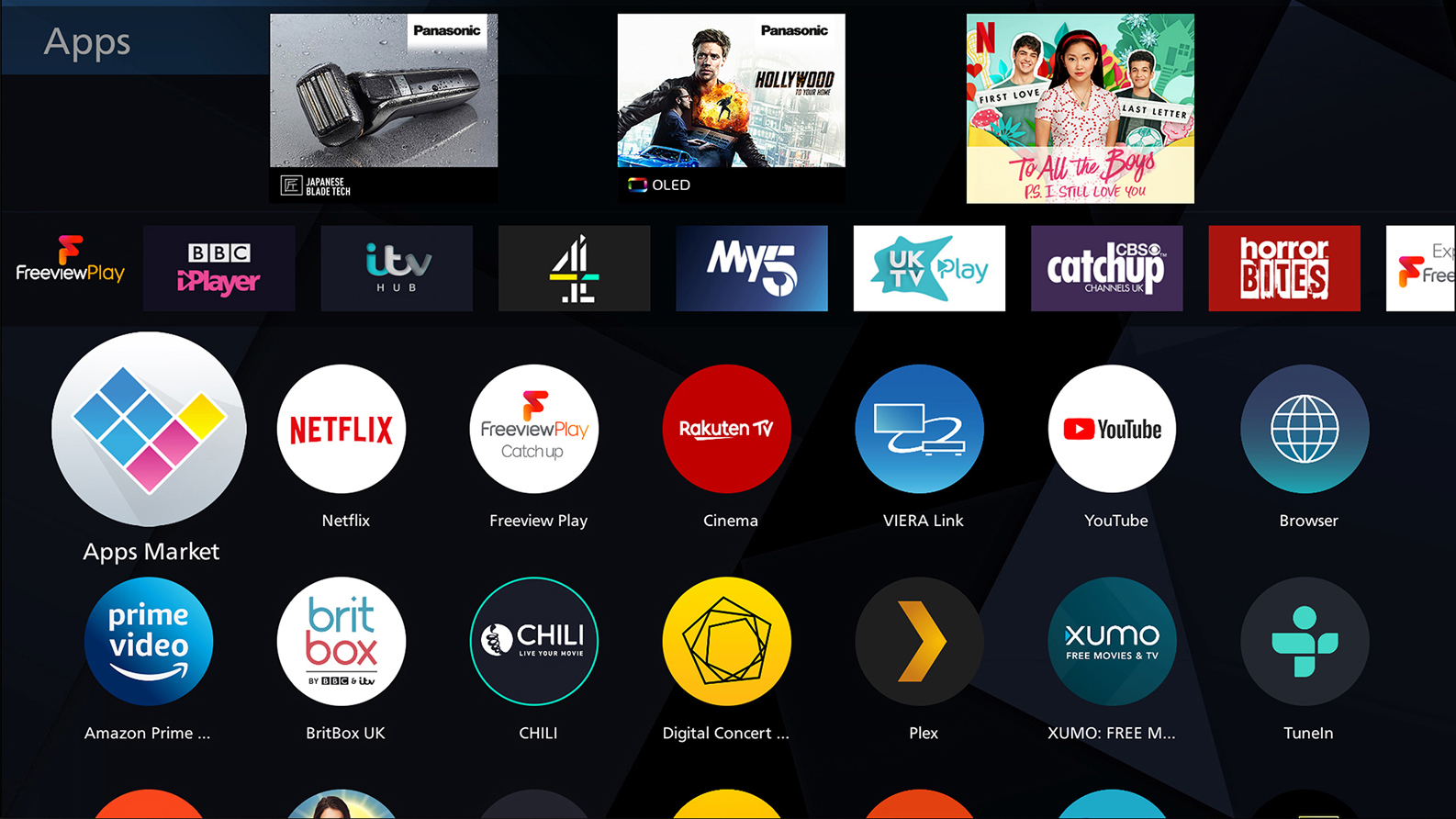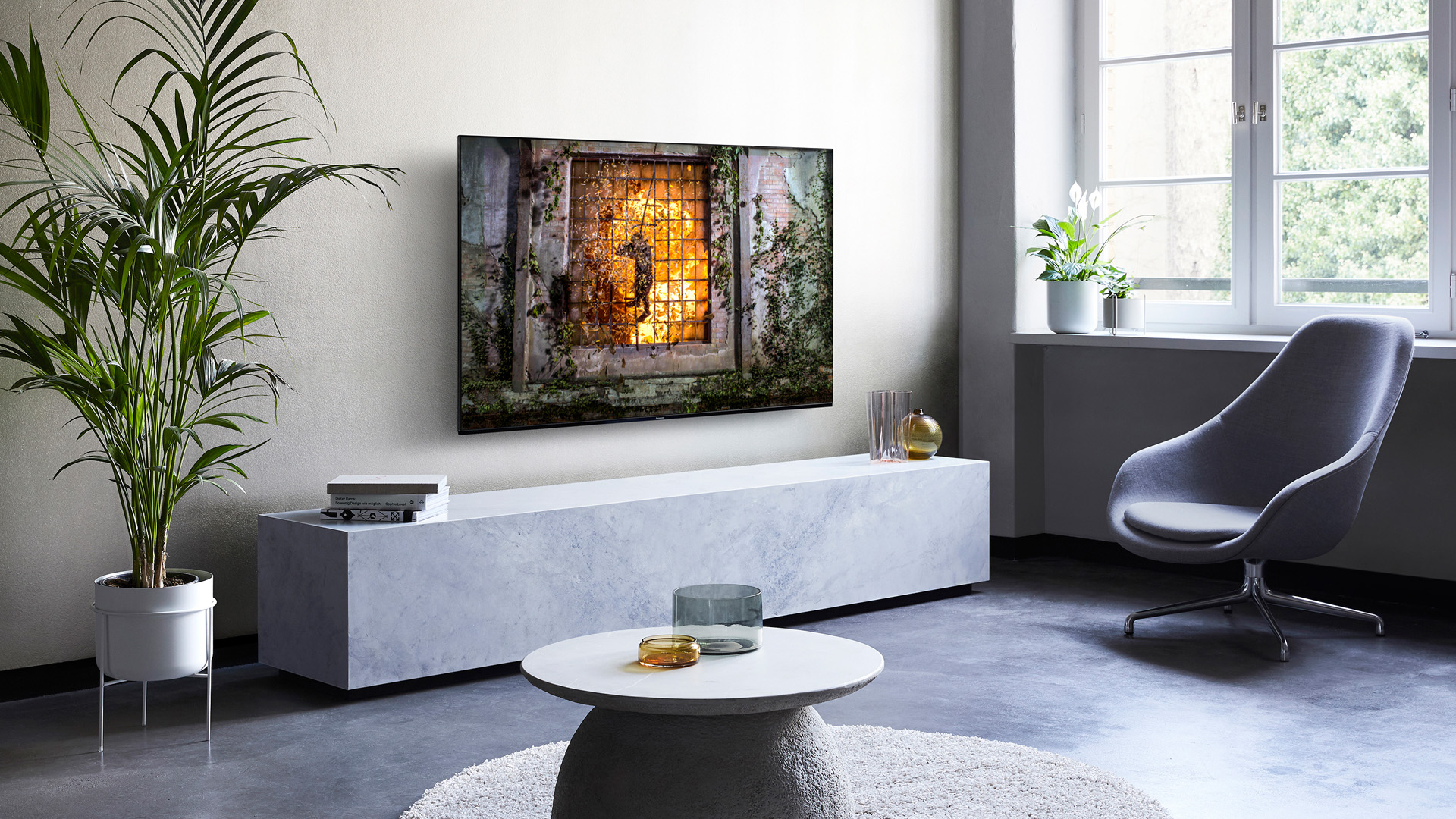One-minute review
The HZ1000 is the Panasonic OLED that AV enthusiasts have been waiting for. Unlike its higher-end HZ2000 and HZ1500 2020 brethren, it doesn’t feature an elaborate Dolby Atmos sound system, but it does share the same universal HDR support, specifically Dolby Vision and HDR10+, and boasts Filmmaker Mode, the Hollywood approved cinema image preset and Dolby Vision IQ.
Image quality, courtesy of an uprated HCX PRO Intelligent processor, is sensational with both 4K and HD sources, and general usability is top notch.
There are very few downsides, though the middling input lag (around 21ms) means this isn't a set for hardcore gamers, and the current lack of Disney Plus will feel restrictive for some.
Now that Panasonic has announced an even cheaper 2020 OLED model – the HZ980 – the HZ1000 is no longer the budget option, either. Regardless, with all of its strengths, this is one 2020 TV certainly worth investing in.
Price and availability
The 65-inch HZ1000 reviewed here – officially the TX-65GZ1000, which retails for £2,400 – is joined in the ranks by a 55-inch model, the TX-55GZ1000 (£1,999). The HZ1000 is currently on sale in the UK.
You won't find Panasonic sets in the US, though they are available in Canada, as well as the EU and Australia.
This model is cheaper than the step-up HZ1500, because it lacks a built-in Dolby Atmos speaker system, and has the edge on the slightly cheaper HZ980, through superior motion processing. The HZ980 uses a regular Smooth Motion Drive, while the HZ1000 sports a Smooth Motion Drive Pro.
Design

It’s difficult to play the minimalist when you tip the scales at 27kg, but build quality and finish here is top notch. The HZ1000 adopts that familiar OLED profile, combining wafer thin panel with half-back electronics. The bottom-heavy cabinet is a little more fulsome than that commonly seen on OLEDs, giving a depth of 58mm.
The screen sits virtually flush with a swivel stand. Despite the weight, it turns on its axis effortlessly, handy if you have an offset sofa.
Connectivity is reasonably comprehensive. There are four HDMI inputs, one of which supports eARC, an analogue AV input, optical digital audio output, Ethernet and trio of USBs. A 3.5 mini jack does double duty as a wired headphone or subwoofer output.
The only other aspect of the HDMI 2.1 specification on-board is ALLM (Auto Low Latency game Mode). There’s no provision for 4K/120Hz, although that doesn’t necessarily mean a firmware update won’t be forthcoming (we’ve asked, so check back later to find out).
The remote control features dedicated buttons for Netflix and Freeview Play, as well as a Filmmaker Mode preset shortcut, more on which below...
Design TL;DR: The HZ1000’s aesthetic is more timeless elegance rather than fashion forward, build quality is impeccable.
Smart TV (My Home Screen 5.0)

Welcome to the fifth iteration of Panasonic’s my Home Screen smart TV platform. We’ve enjoyed the deliberate simplicity of this OS for some time, and it’s fair to say little has changed on the surface. Sure, there have been some minor tweaks to functionality, like thumbnails of recommended content from some streaming service suppliers, but it’s largely the same OS used before.
The standard Home screen launches with buttons designated Apps, Devices, Live TV, and Main Menu. They don’t take up much screen estate. However this collection can be expanded by pinning additional shortcuts. So if you want instant access to Rakuten TV, just pin it, and so on.
It’s an easy interface to live with, less busy than any of the Android builds, and arguably more intuitive than LG’s webOS.
Smart Features TL;DR: Panasonic keeps its smart platform simple, with some minor usability tweaks to My Home Screen but few changes to the main interface. No big change and we approve.
Picture quality

Panasonic has long enjoyed an enviable reputation for TV picture performance, and it doesn’t blot its copy book here. Images are sharp, convincing and beguiling, almost regardless of source.
In addition to inky blacks, commonplace to all OLED models, superb shadow detail and nuanced colour fidelity, there’s a level of pop to the HZ1000’s imagery that’s seductive. It’s the kind of screen you want to watch, even if you don’t care about what’s on.
The HZ1000 features a diverse range of image presets which cover most content situations – Dynamic, Normal, Cinema, Filmmaker, True Cinema, Custom, Professional 1&2 and Sport, plus Dolby Vision HDR variants – and all are often extremely accurate.
Panasonic has carved itself something of a niche in Hollywood, where it’s been supplying OLEDs as client monitors to studio grading suites (so that studios and their clients don’t have to squint at a small mastering monitor), which has led to the development of some extremely accurate Cinema presets. While these don’t necessarily translate to the average viewing room, they provide a pro-style haven for eyeballs that value slightly less colour vibrancy.
Of course, if you want to drive the settings hard, you can. Dynamic leaves things predictably oversaturated, and can be very revealing of limited resolution content. Normal does a sympathetic job with most content, and will be the de-facto viewing standard for most owners.
The big news here is the inclusion of Filmmaker Mode with Intelligent Sensing – a Panasonic original concept – and Dolby Vision IQ. Unlike rival implementations, the latter is clearly labelled, so you know what you’re getting (we’re looking at you, LG).
Filmmaker Mode has been a pet project for the UHD Alliance for some years, and comes with heavyweight Hollywood endorsement. It’s not without issues, though Panasonic’s sensible addition of Intelligent Sensing goes a long way to resolving them.

Select Filmmaker Mode with regular HD SDR content, and the first thing you notice is that the image dulls quite markedly. What sets Panasonic’s execution apart from rivals is the ability to auto adjust image parameters based on ambient light as detected by the TV’s light sensor, all without fundamentally changing image perception. Intelligent sensing acknowledges the role that ambient light plays in the viewing experience and doesn’t get judgemental if you want to watch with the lights on. It’s a brilliant embellishment.
Dolby Vision IQ does a similar job with Dolby Vision content, with the set’s ambient light sensor once again allowing the set to compensate for changes in room lighting.
There’s an authenticity about the HZ1000’s images which can rather take you aback. The detail and texture evident in the character close-ups in Upload (Amazon Prime Video, 4K) is often unsettling.
One of my favourite test go-tos on Netflix is Bong Joon-ho’s eco-fantasy Okja. The cinematography is lush, vibrant, but often densely textured. When the titular super-pig is captured, the black balaclavas of the AFL (Animal Liberation Front) are a rich source of dark detail. Handling the heavy lifting here is the latest iteration of Panasonic’s HCX Pro Intelligent processor, and it doesn’t falter.
HDR support is universal, covering HDR10, HDR10+, Dolby Vision, HLG and HDR Photo, a recent standard which allows photographers to exploit HDR TV displays.
Overall HDR performance is outstanding. We measured peak HDR at around 870cd/m2 (aka nits), with a 5 percent HDR brightness window, using the Normal viewing preset.
This ability to deliver high dynamics means the set doesn’t easily clip with specular highlights for content mastered up to 1000 nits, the ceiling commonly observed for TV and movies.
Colour performance is similarly laudable. The screen has been tuned by leading Hollywood colourist Stefan Sonnenfeld, whose resume includes Wonder Woman and Star Wars: The Force Awakens. Hues are rich without being over-amped. Even in the Cinema presets, there’s nuance and depth in its colour performance.
Motion handling, via Intelligent Frame Creation, is the right side of sophisticated. Generally it’s worth running this setting on the Min setting for everyday telly, although my preference when watching movies would be to turn it off.
Picture Performance TL;DR: The Panasonic doesn’t miss a trick – comprehensive HDR support, excellent highlight performance and shadow detail, plus intelligent Sensing and Dolby Vision IQ guarantee superlative images.
Sound and gaming

The HZ1000 has a largely unremarkably stereo sound system onboard, with 2x15W amplification. While there’s an interesting faux surround sound mode, dubbed Cinema Surround Pro, we suspect most buyers will use the screen as part of a larger AV system. To that end, the set is Dolby Atmos compatible and can stream immersive audio out over HDMI to an Atmos AV receiver or soundbar.
With the majority of Netflix Original content now available in Dolby Atmos, and a growing amount on Amazon Prime Video, it’s always worth bitstreaming out.
The set’s console gaming performance is adequate, too, if not in the same league as some rival premium displays. We measured input lag in Game mode at 21.7ms (1080/60). This is comfortably under my unofficial ‘acceptable’ latency ceiling of 30ms. If competitive gaming is your bag, then a more specialised display would probably be preferable.
Other panels to ponder
While Panasonic is unique in offering a multi-HDR capable OLED boasting filmmaker Mode with Intelligent Sensing and Dolby Vision IQ, there is plenty of competition for your dollar.
LG has a strong contender in its 65-inch CX model, which combines a fine picture performance with a more game-centric feature specification. It’s hampered by poor catch-up TV provision though, and lacks HDR10+ support.
Perhaps a more tempting screen will be Philips 65-inch 805 OLED model. Like the HZ1000, it also has universal HDR support, augmented with a new AI-upgraded P5 picture engine, plus Philips crowd pleasing Ambilight mood lighting.
Verdict
If you’re looking for the best OLED display to partner a separate home cinema sound system, primarily for movies and cinematic TV shows, then the HZ1000 is arguably as good as it gets.
Hollywood colour tuning, a sublime, almost three-dimensional handling of texture and fine detail, plus a class-leading HDR performance, make this Hollywood star nigh on irresistible.
- Here are the best TVs, bar none
from TechRadar: Technology reviews https://ift.tt/3gbtm9Y
No comments:
Post a Comment